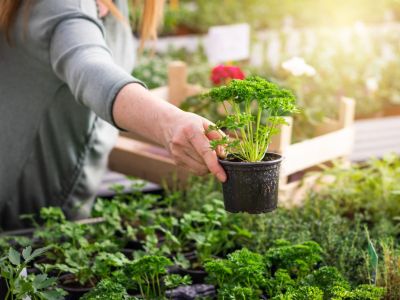Using a Greenhouse for Growing Herbs
Using a greenhouse allows you to control the heat, moisture, and shade for your plants, giving them the most perfect environment in which to grow. Greenhouse herb gardening can protect tender annuals from the extreme summer heat while extending the season and allowing your plants to grow earlier and later in the season. The key to getting the most out of your greenhouse is in setting it up before you add a single plant. Install a misting system and automatic drip hoses in order to ensure a steady supply of moisture to your plants. Herbs fail for many reasons, but lack of adequate moisture is among the most common. With an automatic system that gives a regular, smaller supply of water each day, you’ll be assured of steady herb growth. Another key item for herb growing in greenhouses is a system of shading the plants. If you are building a new greenhouse, don’t create a roof made entirely of glass or plexiglass. Some skylights or sunroof-type installations are great for air circulation, but more herbs need shading from the most brilliant of the afternoon sunshine. If your greenhouse is already built, create a shade system with rip-stop nylon and hooks or Velcro to attach it to the roof. This system will be easy to attach and remove, depending on the needs of your plants.
Types of Herbs for Greenhouses
The best herbs for greenhouse growth are those tender annuals that are too sensitive for the average garden or any herb you wish to grow stronger and in a longer season than normal. Some of the more common herbs grown in a greenhouse include:
Basil Chives Cilantro Dill Parsley Chamomile
Mints are also ideal for greenhouse growing, and because mint is such an invasive plant, it should almost always be planted in a container. Growing your mint in a greenhouse will allow you to experiment with the hundreds of different mint varieties available to the home grower.
